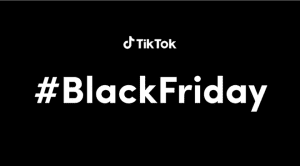
TikTok is the most prominent social network for Black Friday actions
Research with small and medium-sized companies that sell online shows a 280% growth in hiring influencers to promote promotions Small and medium-sized entrepreneurs are betting
10 Email Copywriting Examples that Resonate with Your Audience
Emails are one of the most important tools you can use in your marketing efforts. But with so many promotional emails flooding people’s inboxes every day, it can be challenging to create an email that stands out from the crowd. That’s where copywriting comes in – the art of writing persuasive and engaging copy that resonates with your target audience. In this article, we’ll give you 10 email copywriting examples that can help you achieve that goal.
1. The Welcome Email: Start with a Bang
Welcome emails are the first emails your subscribers receive when they opt-in to your mailing list. Use this opportunity to make a great first impression.
Subject Line: Welcome to the [Brand Name] family!
Hi [Name],
Welcome to the [Brand Name] family! We’re so excited to have you here. As a token of our gratitude, we’d like to offer you a 10% discount on your first purchase with us. Use the code WELCOME10 at checkout to redeem your offer.
In this welcome email, you can also introduce your brand, share your story, and tell your subscribers what they can expect from your emails.
2. The Abandoned Cart Email: The Reminder
Abandoned carts are a common problem for ecommerce businesses. Fortunately, you can use email to follow up with customers who leave items in their carts.
Subject Line: Did you forget something?
Hi [Name],
We noticed that you left something in your cart. If you need any help completing your purchase, just hit reply and let us know. To sweeten the deal, we’d like to offer you free shipping on your order. Use the code FREE at checkout to redeem your offer.
3. The Clearance Sale Email: Sense of Urgency
If you’re looking for a way to clear out old inventory, a clearance sale is a great option. Use email to let your customers know about the sale and create a sense of urgency.
Subject Line: Last Chance to Save Big!
Hi [Name],
We’re having a clearance sale! Get 50% off all clearance items now through the end of the week. Don’t wait – these deals won’t last forever.
4. The Product Launch Email: Anticipation
When you’re launching a new product, you want to build anticipation and excitement beforehand. Email can help you do just that.
Subject Line: Sneak Peek: Our Latest Product
Hi [Name],
We’ve been hard at work on our latest product, and we can’t wait to share it with you. Here’s a sneak peek of what’s to come. Stay tuned for more details and release information.
5. The Event Invitation Email: Personalization
If you’re hosting an event or webinar, email is a great way to invite people to attend. Personalization is key to making your email stand out.
Subject Line: You’re invited to our [Event Name]
Hi [Name],
We’d like to personally invite you to our upcoming [Event Name]. It’s going to be an amazing event, and we’d love for you to attend. Click here to RSVP and secure your spot.
6. The Referral Email: Word-of-Mouth Marketing
Referral marketing can be incredibly effective. Use email to encourage your current customers to refer their friends and family to your business.
Subject Line: Share [Brand Name] with Your Friends
Hi [Name],
Do you have any friends or family members who could benefit from [Brand Name]? If you do, we’d love for you to refer them to us. As a thank you, we’ll give both you and your friend 20% off your next purchase.
7. The Newsletter Email: Value-Added Content
Newsletters are a great way to stay in touch with your subscribers and provide them with valuable content.
Subject Line: [Brand Name] Newsletter – August Edition
Hi [Name],
Welcome to the August edition of the [Brand Name] newsletter. In this issue, we’ll be sharing our top tips for staying healthy, our latest product releases, and a sneak peek at what’s coming up next for our brand.
8. The Follow-Up Email: Personal Touch
If you’ve recently interacted with a customer, follow up with them via email to show your appreciation and see if they need any further assistance.
Subject Line: Thanks for Your Purchase!
Hi [Name],
We wanted to personally thank you for your recent purchase from [Brand Name]. We hope you’re enjoying your new [Product Name]. If you need any help or have any questions, don’t hesitate to reach out – we’re here to help.
9. The Re-engagement Email: Win-back Strategy
Sometimes, subscribers will stop opening or engaging with your emails. Use a re-engagement email to try and win them back.
Subject Line: We Miss You!
Hi [Name],
We’ve noticed that you haven’t been engaging with our emails lately. We want to make sure that we’re delivering the content you’re interested in. Please take a moment to let us know what you’d like to see more of in the future.
10. The Thank-You Email: Gratitude
Finally, a thank-you email can go a long way in showing your subscribers that you appreciate their support.
Subject Line: Thank You for Your Support
Hi [Name],
We wanted to take a moment to thank you for your support of [Brand Name]. We wouldn’t be here without our amazing customers like you. As a token of our gratitude, we’d like to offer you free shipping on your next purchase. Use the code THANKYOU at checkout to redeem your offer.
Conclusion
Copywriting is an important skill to have in your marketing arsenal. By crafting engaging and persuasive copy, you can create emails that resonate with your audience and lead to more conversions. Use these email copywriting examples as inspiration for your next email marketing campaign.
FAQs
1. What is the most important part of email copywriting?
The most important part of email copywriting is understanding your target audience and what they want. Use customer personas and market research to create emails that resonate with them.
2. How can I make my emails stand out?
To make your emails stand out, use attention-grabbing subject lines and personalization. Create a sense of urgency or exclusivity to encourage subscribers to take action.
3. How often should I be sending emails?
The frequency of your emails will depend on your specific business and audience. Test different frequencies to see what works best for your subscribers.
4. Should I include images in my emails?
Images can be a great addition to your emails but don’t overload them with too many. Ensure that images are relevant to the content and don’t slow down the load time of your email.
5. How can I measure the success of my email campaigns?
Use email marketing software to track open rates, click-through rates, and conversion rates. Analyze this data to see what’s working well and what areas can be improved upon.

Research with small and medium-sized companies that sell online shows a 280% growth in hiring influencers to promote promotions Small and medium-sized entrepreneurs are betting

Maximizing Your Marketing Potential with Klaviyo SMS Campaigns Most businesses today strive to reach their target audience as effectively as possible, and email marketing is

Maximizing Your Sales with Pipedrive Email Marketing As a business owner, you are constantly looking for ways to maximize your sales and grow your customer

Talk with us!
Do you have a project in mind? Send us a message to understand how we can help you. We will get in touch with you.